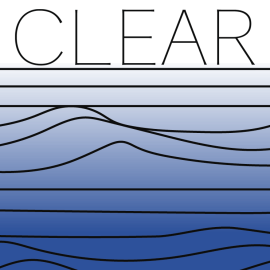How do you dress professionally to accommodate your own style, gender expression and comfort? Many graduate students only have one “good outfit,” but what if there is a two-day interview? Dressing Up Academia is an annual workshop and clothing give away organized by CLEAR under Dr. Max Liboiron targeted at graduate students and postdocs on the job market in Canada and the USA. If you can’t make the workshop, the cliff notes are below and here’s some media coverage.
Disciplinary norms
The norms and expectations of academic fashion are discipline-specific and country-specific (Europeans out-dress North Americans every time). I’ve seen American environmental historians wear converse and jeans to conference presentations, and I’ve seen business administration scholars wear three-piece suites. Both fit in. You can attend conferences in your field that are held at your institution and work with your advisor to learn about these norms. But overall, some version of “business casual” is likely to hit the spot.
Job interview norms
Interviewees will usually be dressed one step better than their interviewers. Overdressing slightly is better than underdressing slightly. Also, academia in general and job interviews, in particular, are usually (always?) conservative spaces invested in reproducing versions of itself, even if job ads state they want something innovative and new– it usually means innovative and new in ways the search committee can already imagine. I’ve sat on many job searches, and as soon as someone presents as particularly groundbreaking and pushing the norms, people are initially excited but then start throwing around the word “fit” and those amazing folks tend not to get hired. This means that you need to tone your style to be legible and resonate with existing norms.
And that’s the problem. What are those norms? How do you dress more conservatively and more fancy than you usually do, and still feel comfortable and not compromise on who you are?
Dressing up doesn’t mean transforming yourself
The workshop is based on the premise that you already have a style and stylistic preferences, and that you don’t need to fundamentally change these or depart from them to fit into professional attire and presentation norms. When I began as an assistant professor, I bought a lot of clothes I could barely afford that were “nice” but that I could never bring myself to wear. That was a waste of money and caused some stress. Plus I had a closet full of duds. My good friend Dr. Katie Pine helped me realize I had a style and just had to bring it into a new arena. This workshop builds on some of her insights.
What’s your style?
The Dressing Up Academia workbook takes you through some basic questions: what was your favourite outfit when you were a kid? What’s your favourite outfit when you’re at home? When you go out? We then take the descriptions of those outfits to identify the main things you value about them. Are they all comfortable? Fun? Classy even if they’re relaxed? Must they have pockets? Do they always express your gender in a certain way?
Once you have those descriptors, we choose the most important one– what is the dealbreaker for you? What must your clothes include? For me, it’s comfort. If my clothes aren’t comfortable, even if I look damn good in them, I just won’t take them off the hanger and wear them. I can survive without pockets (though I don’t love it), and I can even look a little frumpy, but I need clothes that feel pleasant to wear.
Name that style
While I knew I liked an all-black wardrobe (fewer decisions! everything matches! no one can tell when I spill on myself!) and comfortable clothes, I would still buy black comfortable things that I wouldn’t wear. Usually, they were too femme. What finally helped me narrow things down was creating a “fashion avatar” for myself: an androgynous ninja. Once I could hold that avatar in my mind, when I bought clothes I knew that things that were too femmy weren’t going to fly, clothes with too many buckets or zippers or shiny bits were out, and clothes that were too complex would stay on my hangers. Here’s a full-body “headshot” of my basic academic fashion for job and high-profile media interviews:

The examples of fashion avatars I came up are just teasers: Italian wizard in the fall (fall colours, tweed and scarfs), Gay Harry Potter (tweed with blue or pink trousers, round glasses, a bit of flourish in the accessories), Slightly flirty Spock (plain clothes, one or two colours, but with a scarf that says ‘come hither’), Boyish Pilot (blue suits with awesome hats and maybe some yum-yum shoes), Dapper Dracula (dark pants and blazer, white shirt, red flourishes, sharp cuts), Business Angel (light-colored suits, clean cuts, probably a lot of linen), Minimalist Hip Hop Artist (loose and long blazers, wide-cut pants, a single piece of big jewelry, smart fabrics), Timeless silhouette (black clothing, close-fitting, no jewelry, slicked-back hair)…. But you name yours. You’ll likely find that you have to nuance it. “Taxi driver chic” might need some definition. “Classic guy” describes 50 styles…
Some examples of academics with fashion uniforms
Here are some stylin’ academics who have a basic uniform or set of guidelines for how they dress. I’ve curated images so they express continuity (all photos from public sources).











